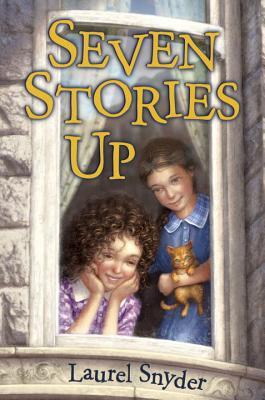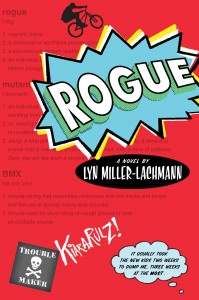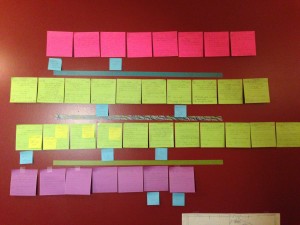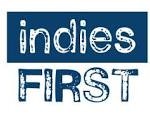
In this companion to Bigger than a Breadbox a leap back in time and an unlikely friendship change a family forever. Annie has never even met her grandmother before. In fact, she’s never had much family to speak of. So when she and her mother pull into the drive of her grandmother’s home in Baltimore, Annie can hardly contain her excitement!
But when she actually meets her grandma, the bitter old woman doesn’t seem like someone Annie could ever love, or miss. Until one magical, stormy night changes everything.
It’s impossible that Annie could have jumped back in time. . . right? But here she is in 1937— the year her grandmother was just her age! Molly is an invalid. She lives by herself, on the top floor of a hotel. She seems a little lonely, but friendly and fun, nothing like the horrible old woman Annie just met.
Annie entices Molly down from her room, and together the two girls roam. They sneak around the grand hotel, and explore the brick streets of old Baltimore. Carnivals and taxis, midnight raids on the kitchen. The two grow closer.
But as Molly becomes bolder, and ventures further from the safety of her room, Annie begins to wonder how she’ll ever get back home. Maybe she’s changed the past a little too much. . .
3 Things for a Middle Grade Reader to love
1. TIME TRAVEL! One of my favorite kinds of story when I was a MG reader. And not some grand cloak and dagger plot but a unique friendship story set cosily within a single family.
2. The level of detail for the 1937 setting is just right. Lots of rich imagery and vivid details about city life in Baltimore, but not heavy handed historical themes. There were difficult things going on in this country in the late 30s and Snyder does a good job of mentioning them without highjacking the story. I had an ARC to read which suggested that there will be illustrations at the chapter headings but I haven’t seen them. Even without illustrations I had no trouble picturing the particulars of the setting.
3. There’s a dumb waiter! I was fascinated by those as a child. The details of sneaking in and out of the hotel are great! I remember climbing through the laundry chute and out the window and shinnying down drainpipes–not that I needed to mind you–I did all this for the sheer entertainment of it. Great fun! Okay, to be fair, there are sad bits. But I was totally won over by the fun and the sad parts only made the skulking around more appealing.
Something for a writer to think about
I am not brave enough to write a time travel book. I love them. They seem hopelessly complicated to me and bouncing back and forth, I think, can be a lot to ask of a reader. I really like how the time travel bit worked out in Seven Stories Up. I particularly like the way Annie’s character built herself a mental bridge of stories about her mother to keep the path home open. I do think that story, and family story in particular, is a way kids in trouble find their way home, like Hansel and Gretle’s pebbles in the forest.
How I found this book
Once again a non-objective review! Laurel is a friend and the ARC came to me by way of my regional sales rep. Thanks Deanna!




